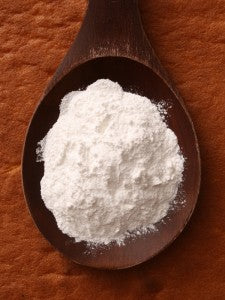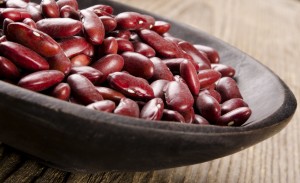
Recent reports on radio, television, and in newspapers and magazines across the country report scientific evidence that we as a nation are consuming too many refined foods, too much fat, too much meat, too little fiber, too few fruits and vegetables, and too few grains. In addition, hydrogenated and partially hydrogenated fats should be eliminated from our diets. The problem is most of the products in the grocery store, except for the fresh produce department and the grains and beans aisle are also eliminated. It also seems to eliminate anything quick to prepare and everything that tastes good!
Not so! There are many great-tasting, easy, and quick-to-prepare natural foods to fill the gaps left when we eliminate not-so-good-for-you foods. Legumes (dry beans, peas, and lentils) are nutritious, high in fiber and protein, and low in fat and salt. Now you may eat more delicious meals without counting calories and fat grams. Legumes can be added to hundreds of foods to enhance texture and nutrition. Serving beans with grains, eggs, or cheese makes a "complete" protein.
Bean Flour
Bean flour is one great way to put your beans or other legumes to use. Bean flour can be added to any recipe calling for wheat flour. Replace up to 1/4 of the total amount of wheat flour with bean flour. Super nutrition can be added to any commercial dry mix (cakes, cookies, muffins, breads) by adding a few tablespoons of bean flour to the dry ingredients, then adding extra liquid as necessary. Combining bean and wheat flours also helps form a complete protein for those cutting out or down on meat. The best part is that no one will ever know they’re eating beans!
By adding bean flour to thicken gravies and sauces, you increase the nutrition and make your dishes virtually fat-free. Bean flour of any kind also makes an excellent "instant" creamy soup base. No more soaking, boiling, mashing, and blending those beans to make thick, creamy, rich-tasting soups. Simply grind some dry beans, add water, and cook for 3 minutes. Add your own pasta, vegetables, or other beans for a quick, healthy, homemade soup. These 3-minute soups can be made in the microwave or on the stove top. See the recipe section of this web site for more recipes that use beans.

Grinding Tips
To grind beans, first sort them and check for dirty beans or rock pieces. Place the mill in a kitchen sink and fill hopper with beans. Cover with kitchen towels to reduce bean dust, and leave a hole to stir beans as they go into the milling chamber. Small seeds like peas and lentils will not need to be stirred. Large beans like lima will need to be cracked in a blender or food grinder before grinding to a flour. Clean the sponge filter after each hopper of beans.
Store flours in resealable plastic bags or other food storage containers and refrigerate or freeze if possible. Flours last about six months at room temperature. After that time, a bitter aftertaste may start to develop. Old beans which have been stored too long (usually over 10 years) will taste bitter whether they have been cooked whole or ground to a flour and made into soup.
Traditional Use of Beans
When cooking with beans, it is helpful, although not necessary, to soak and cook dry beans beforehand. There are two ways of doing this--the long soak method and the quick soak method. Before cooking or soaking beans, you should wash and sort the beans. Remove any rocks or dirt, and damaged beans, then rinse the beans in cold water.
Note: Lentils and split peas do not need to be soaked.

When using the long soak method, place the beans in a container and cover with approximately 4 times as much room temperature water as beans. Keep beans covered and let them soak 8 to 12 hours. Discard soak water and cook.
To prepare beans using the quick soak method, place beans in a large pot, cover with water, and bring to a boil. Let the beans boil for 2-3 minutes, remove from heat and let stand at least 1 hour. Discard the soak water and cook.
The longer the beans are soaked, the more sugar will be dissolved and the beans become easier to digest. To cook the beans, refill a pan with fresh water, enough to cover the beans, and add 1-2 teaspoons vegetable oil and 2 teaspoons salt (optional). Simmer beans slightly uncovered, until tender. Add to your favorite recipe.
Cooking beans without soaking takes a longer amount of time. When cooking unsoaked beans use twice as much water and bring to a boil, add beans, then cover and simmer for 2 to 3 hours until beans are tender. Watch carefully and add water as needed.
Cooking time will depend on how tender you would like the beans. A bean that has been cooked, but is still firm is great for salads, while a bean that has been cooked longer until soft can be easily mashed. Taste test often to achieve desired tenderness. High altitudes will require a longer time to cook the beans.
Foods that are acidic (such as tomatoes) should be added last when using dry beans in a recipe. The acid slows the softening of beans and prolongs cooking time.
Bean Equivalents
1 lb dry beans = 2 cups
1 cup dry beans = 3 cups cooked
1 lb dry beans = 6 cups cooked





